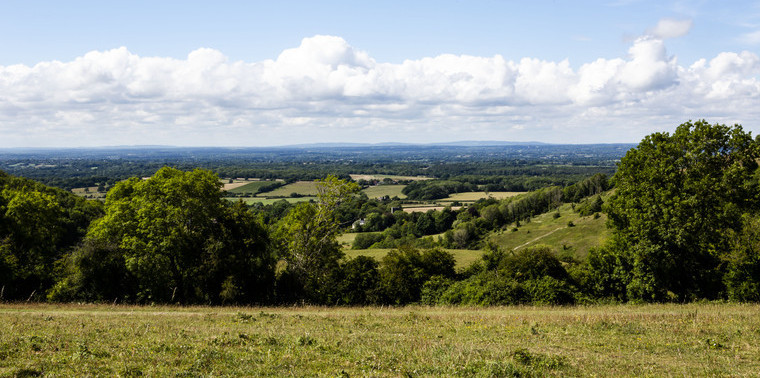A pioneering project looks set to breathe new life into critically threatened woodlands across a large area in southern England and make it more resilient to climate change.
Led by the Woodland Trust, The ‘Lost Woods of the Low Weald and Downs’ project aims to improve woodland across 400km2 of Sussex – where tree cover has become fragmented and degraded.
The project has received initial support and development funding of £347,000 from The National Lottery Heritage Fund to develop the plans and application will be made for a further delivery grant of £1,974,100 at a later date.
The area, which stretches from Pulborough in West Sussex to the fringes of Lewes in East Sussex, is dominated by agriculture and the remaining woods are often small and in poor condition due to a range of issues including tree disease, invasive species and management that doesn’t prioritise the ecological benefits of trees and woods.
Ed Goodall, the Woodland Trust’s Lost Woods of the Low Weald and Downs Project Manager said the multi partnership project is of huge importance to increase the area’s biodiversity and its ability to combat the climate and ecological crises.
He said: “We are delighted to be awarded this funding. Sitting predominantly between the South Downs National Park and High Weald AONB this is very much an area that has been forgotten from an ecological point of view – where tree cover has been chipped away over time.
“It’s in desperate need of this project to stimulate conservation work and raise the profile of this area – it’s importance as a corridor between these amazing landscapes will be hugely beneficial.
“The project focusses on working with small woodland owners to improve the condition and management of the fragmented woodland sites – increasing their size and reconnecting them, allowing biodiversity to thrive and move throughout the landscape. We aim to inspire landowners and communities by the nature that is on their doorstep. By interacting with it responsibly, people will have learned new skills and understood the importance of making space for nature.
“The woods have the ability to be a home and important sanctuary to much more wildlife than they currently support if they are looked after in the right way, making sure we are doing our bit in Sussex to combat the global ecological crisis. We can’t wait to get stuck in!”
Tree cover in the Low Weald area is just 14 per cent, compared to 22.8 per cent in the South Downs and 24.8 per cent in the High Weald area to the North. Nearly 60 per cent of woods in Low Weald are not currently managed and so are often dark and lacking in the abundant wildlife you would expect in a healthy woodland. Many are full of invasive rhododendron and the rotations in traditional coppice woods which bring abundant biodiversity have lapsed for decades.
The Woodland Trust will work with multiple partners – including the Sussex Wildlife Trust, Action in Rural Sussex, Small Woods Association, the Ouse & Adur Rivers Trust and the Environment Agency.
The initial development phase will last for 18 months and lay the ground work for the full five-year project, worth £2.8M. The partners will test interventions in the landscape, developing case studies and building up a pipeline of work to deliver should the second round application to The National Lottery Heritage Fund be successful. The project will be embedded in local communities and show local people the stories, secrets and benefits that are locked up in the “lost woods.”
Ed added: “If we do not act now to improve the condition and connectedness of the landscape between the designated landscapes, the woods will become smaller and smaller, more degraded and potentially lost altogether with significant impact on wildlife and people.”
Tor Lawrence, Chief Executive of Sussex Wildlife Trust said: “The importance of woodlands and trees has never had so much recognition, from wildlife value, their role in flood reduction, carbon sequestration and physical and mental well-being. A strong Sussex network of healthy woodlands is vital going forwards and we are thrilled to be part of such an innovative project connecting our woodlands and bringing people to their local woodlands.”
Petrina Mayson, Chief Executive Action in Rural Sussex said: ““Action in rural Sussex is delighted to be providing the community engagement aspects of this fantastic new project.”
Get involved in the project facebook.com/lostwoodssussex
The UK Government committed to act on the Committee on Climate Change recommendations and legislate for net zero emissions by 2050. The CCC report called for an increase in UK woodland cover to 17% by 2050. This would require a planting rate of 30,000 hectares a year until 2050. To do this 50 million trees would need to go into the ground each year.




